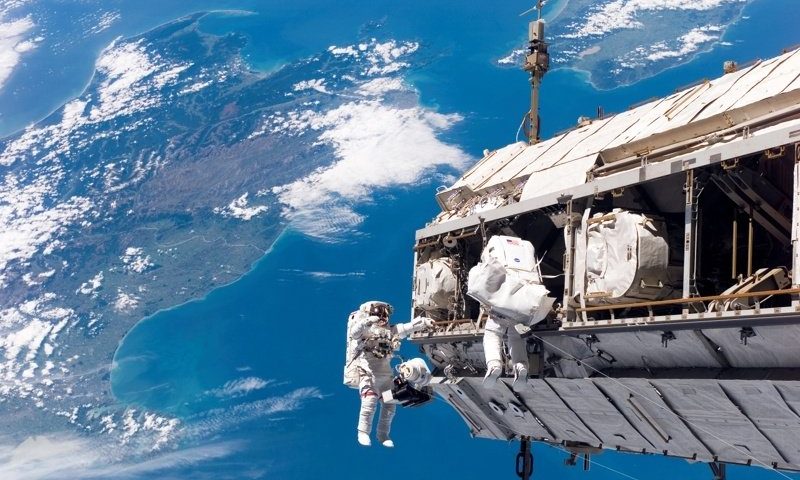Space radiation has long been a concern for astronauts living beyond Earth’s protective atmosphere—it can damage DNA, leading to cancer and other ailments. But even as NASA works to send people to Mars, scientists have struggled to understand how the body repairs DNA damage from cosmic radiation. That’s where CRISPR, yeast and a group of high school students come in.
The students, alongside scientists from JES Tech, NASA, miniPCR, MIT and Boeing, baked up an experiment to study how cells would repair damaged DNA in low gravity, starting with yeast. The team developed a method that uses CRISPR/Cas9 editing to make a double-stranded break at a specific place in the yeast’s DNA.
Why CRISPR? So the astronauts conducting the experiment aboard the International Space Station could zero in on how the cell repaired precisely inflicted injuries rather than try to observe how cells fix more complex or widespread damage.
Using a CRISPR-based system meant the astronauts didn’t need to use radiation on the yeast, which—it should go without saying—is unsafe to employ during spaceflight, the researchers wrote in their paper, published in the journal PLOS ONE on Wednesday.
What’s more, the whole experiment could be done on the space station without needing to send the yeast back to Earth for analysis. That’s important, because previous research suggests cells may use different DNA repair strategies in microgravity than on terra firma, potentially causing more problems down the line.
The study marks the first time CRISPR-based editing has been done in space and lays the groundwork not just for more studies on DNA repair, but also for other experiments looking at genetically engineering organisms beyond the planet’s reach, the researchers wrote.
And it wasn’t easy. Microgravity, understandably, “poses challenges to liquid handling,” and safety concerns preclude the use of equipment and reagents typically used in labs on Earth. For the experiment, the team had to use smaller samples than used in everyday labs, and they had to use premixed, frozen reagents, too.
Moving forward, the researchers could tweak the method to better simulate the more complex DNA damage caused by the ionizing radiation found in space. Double-stranded breaks made by CRISPR “are much simpler than those generated by high-LET [linear energy transfer] particles found in space,” which can cause “clustered and complex DNA damage that may be difficult to repair,” they wrote in the paper.

